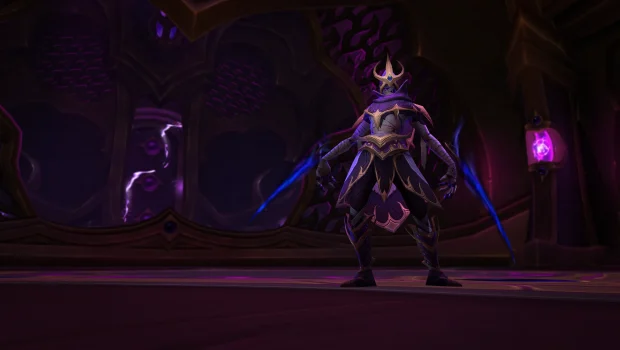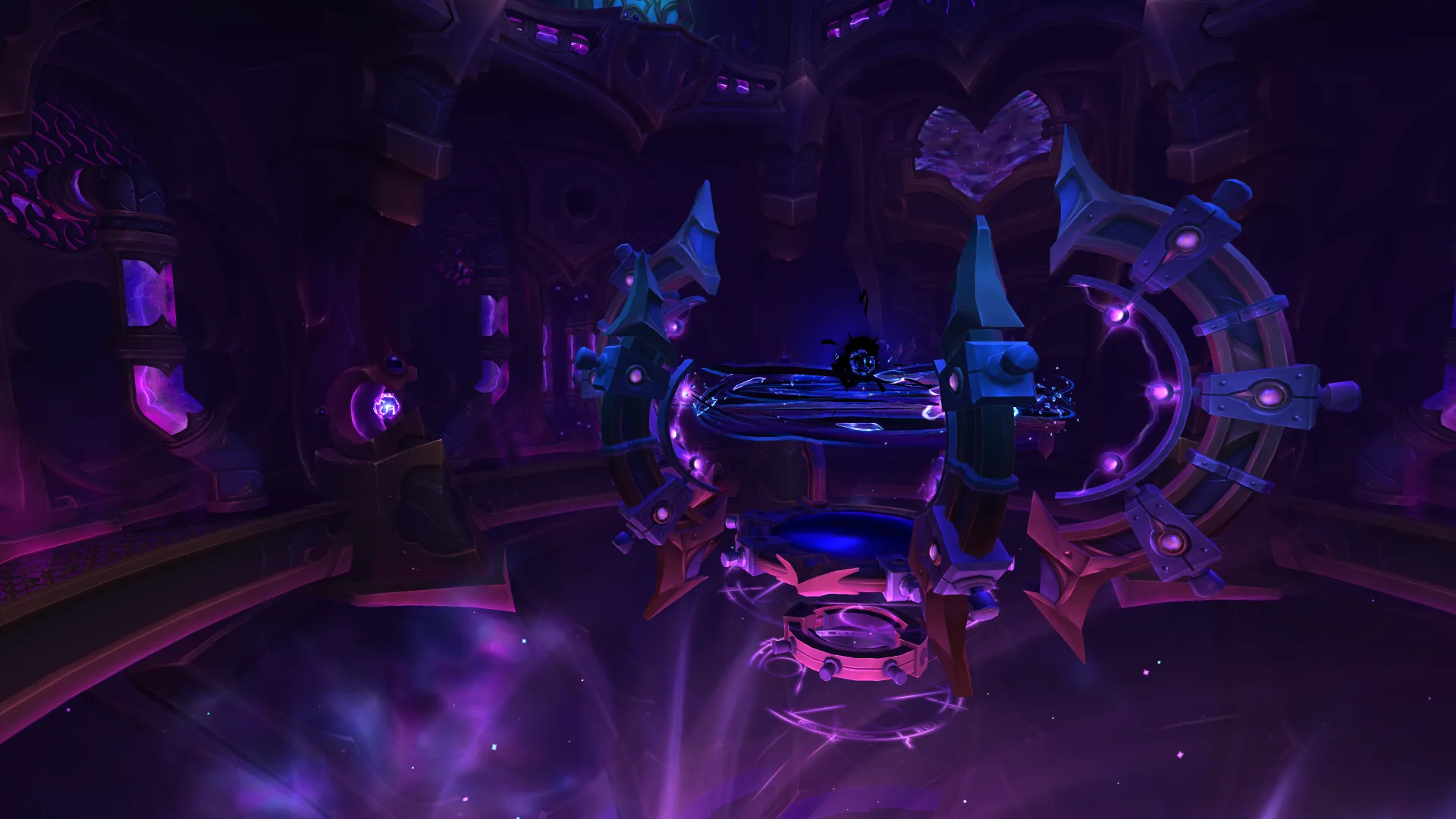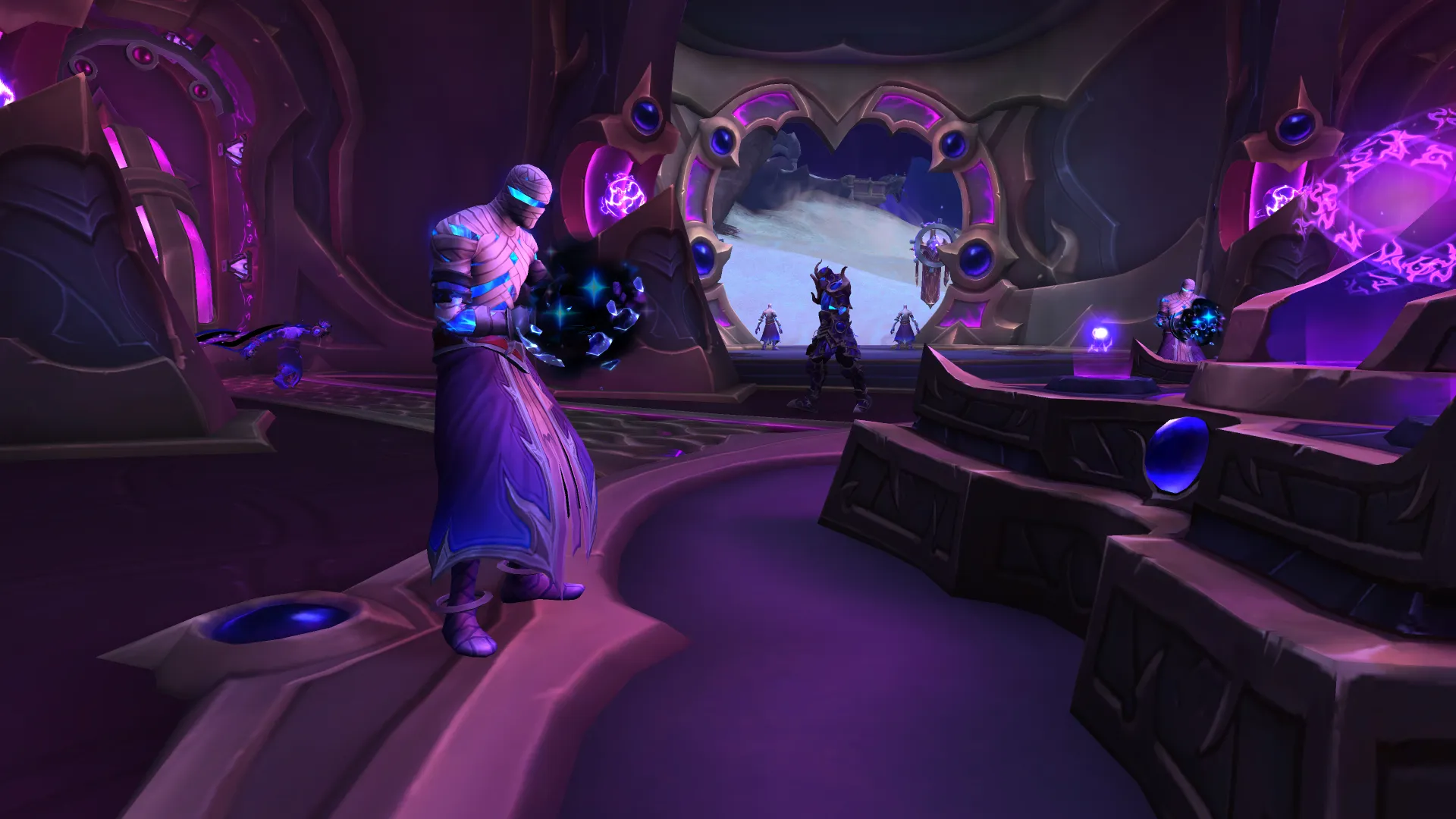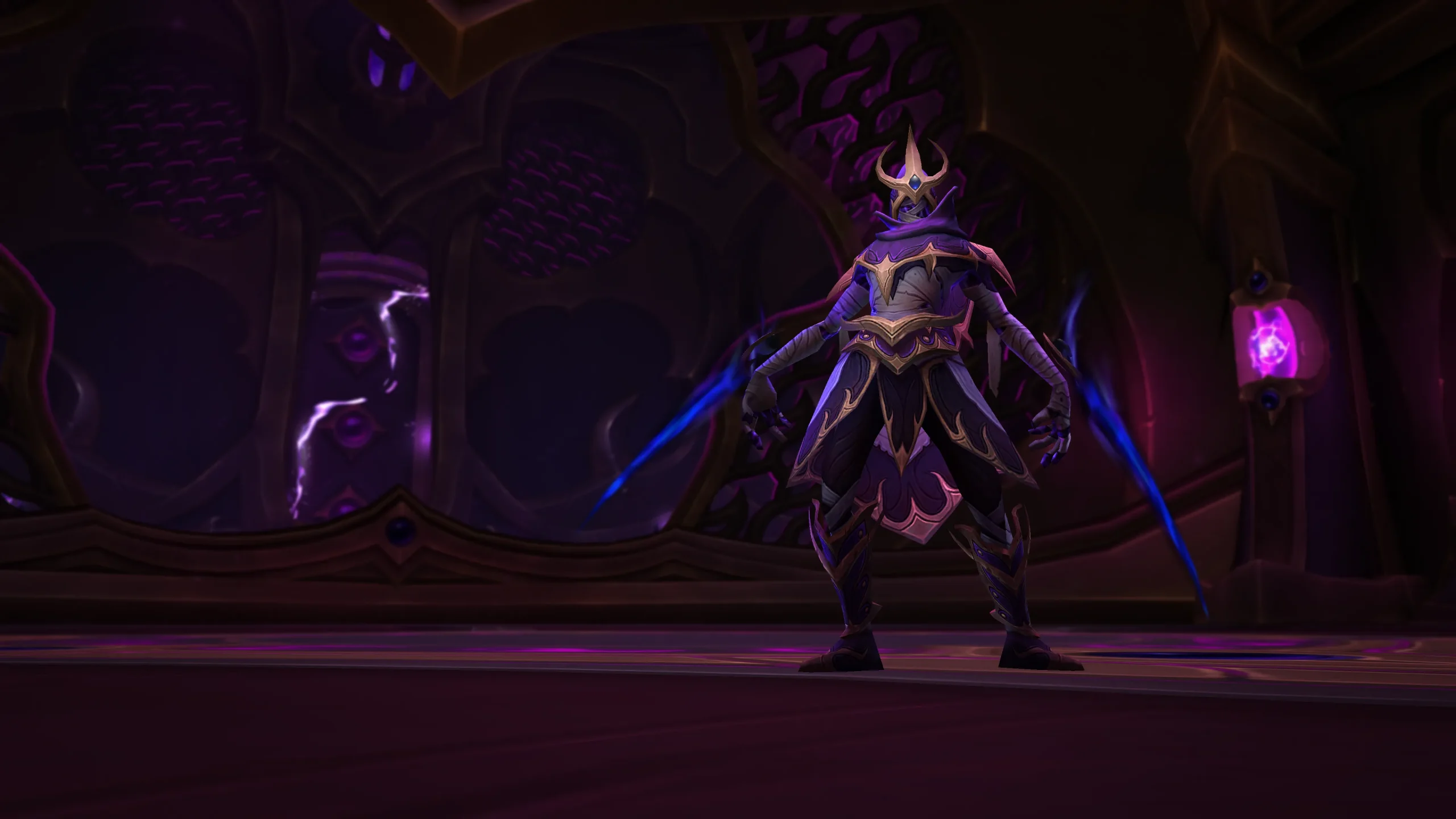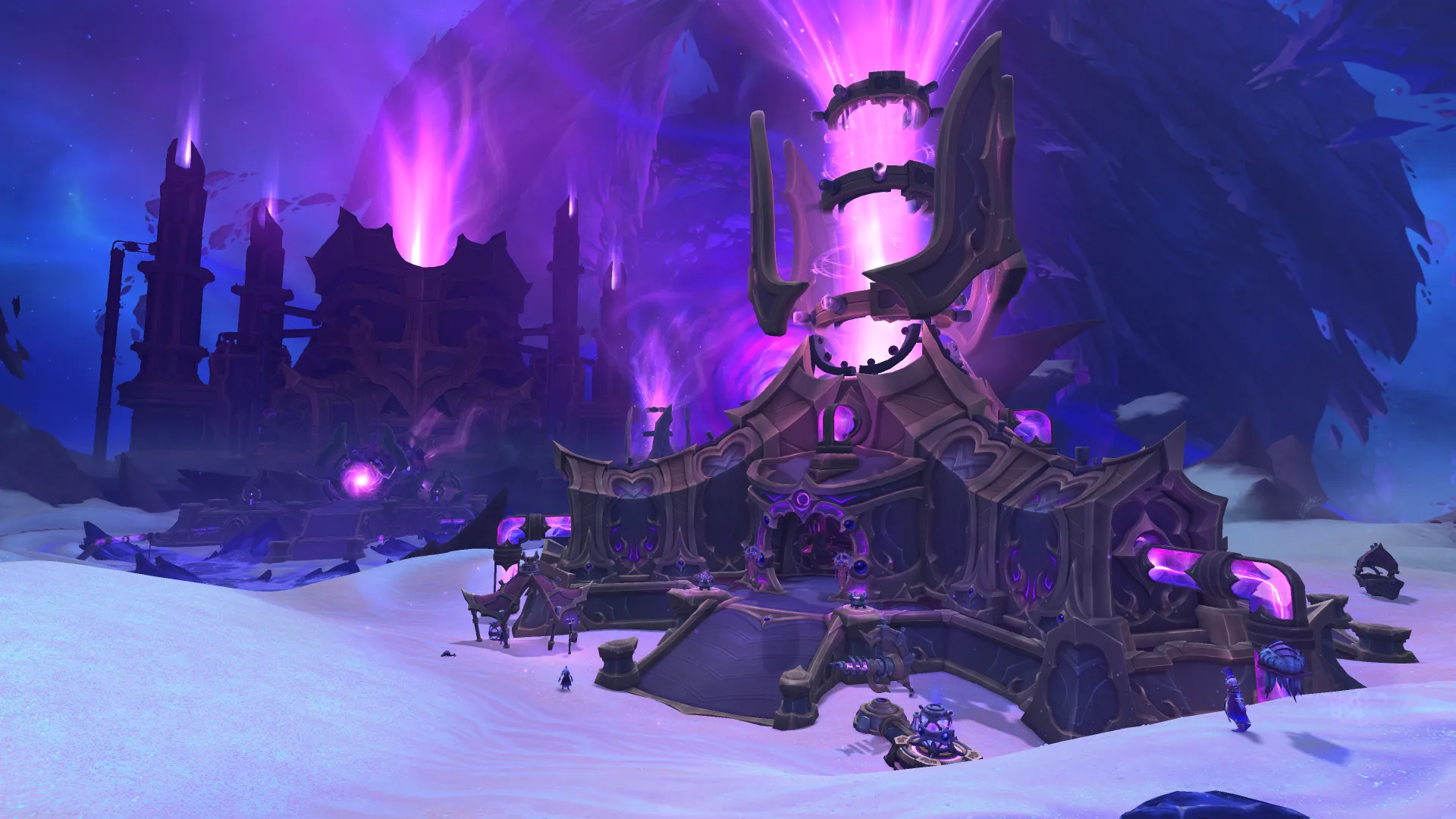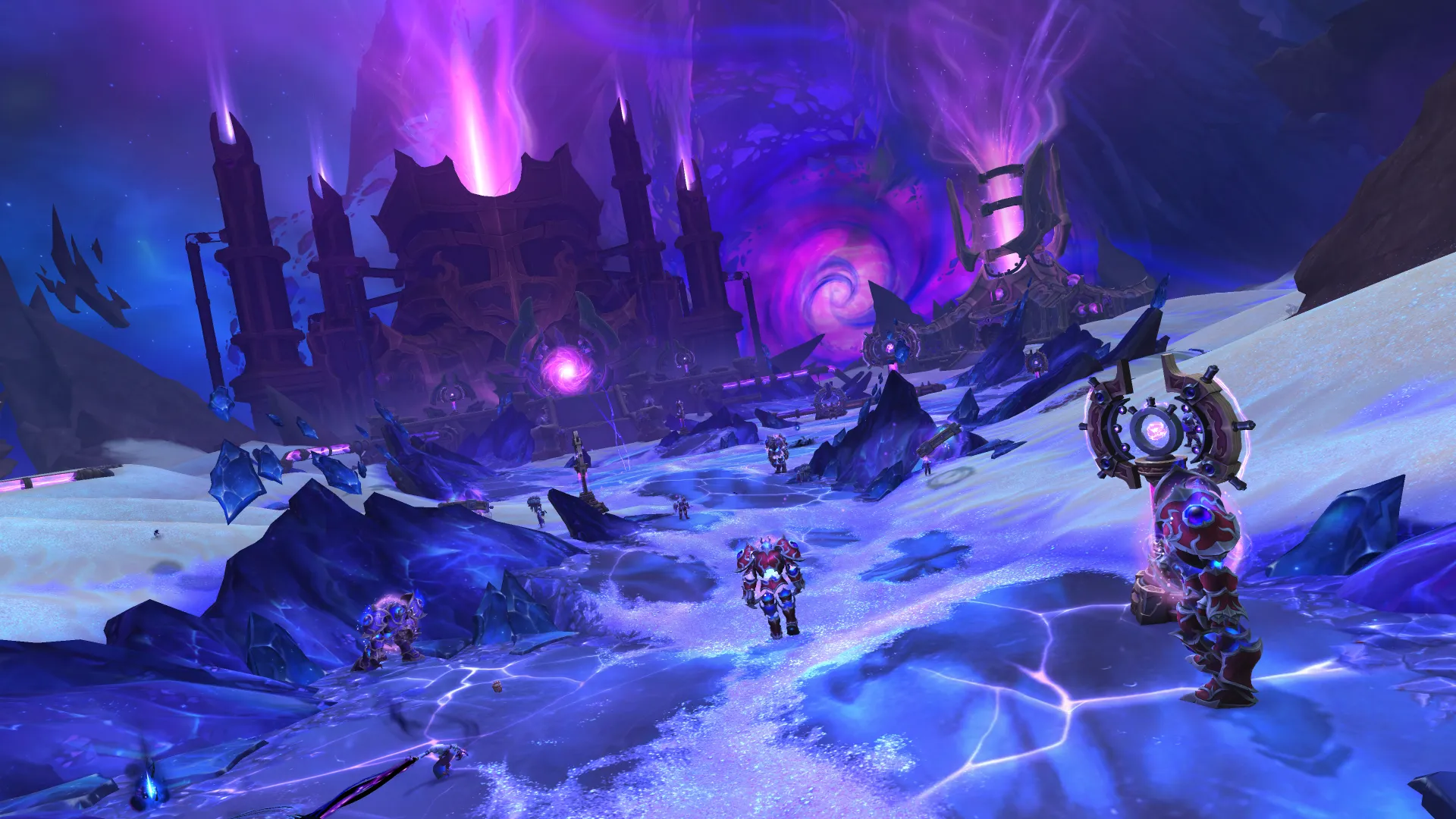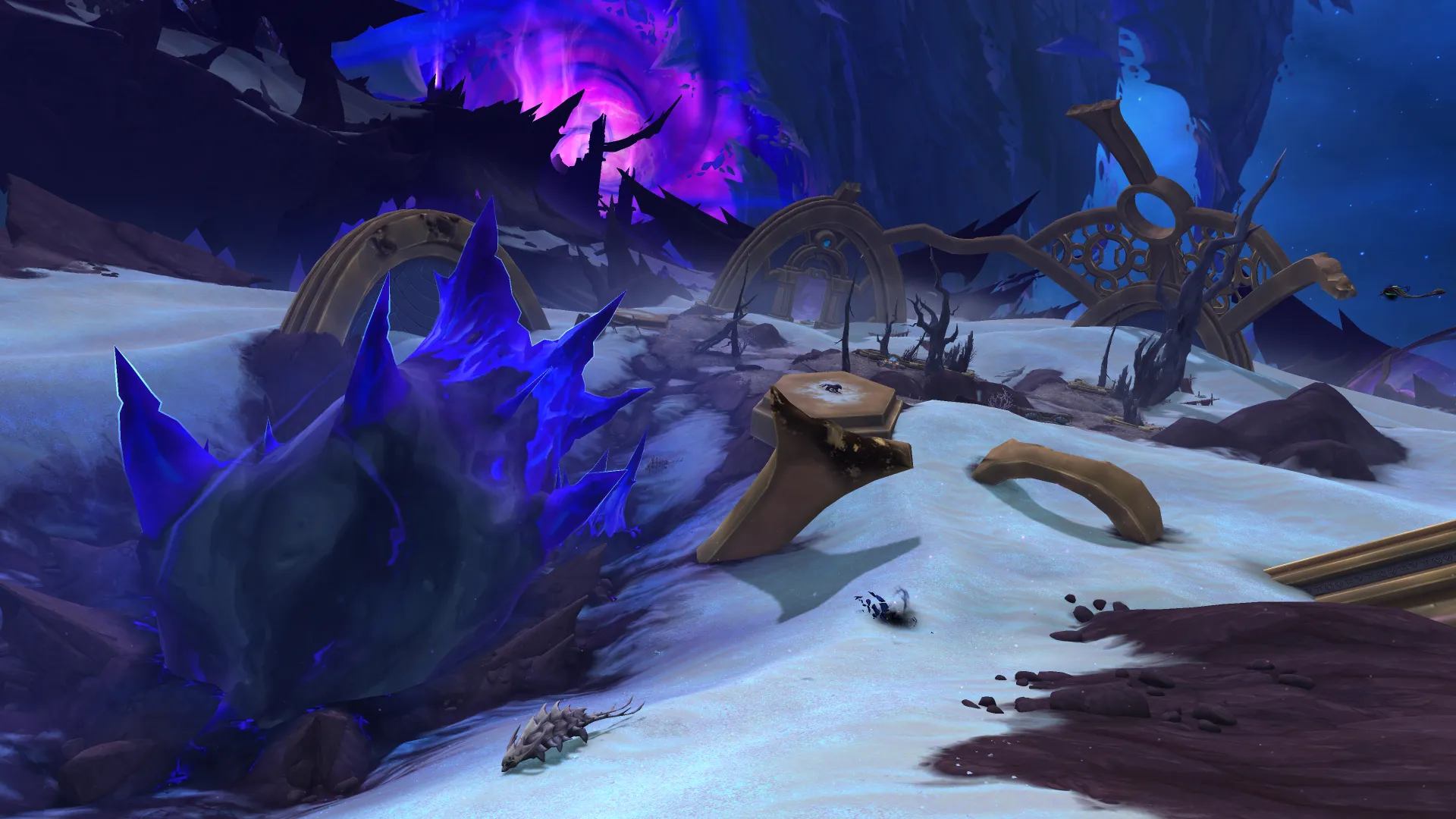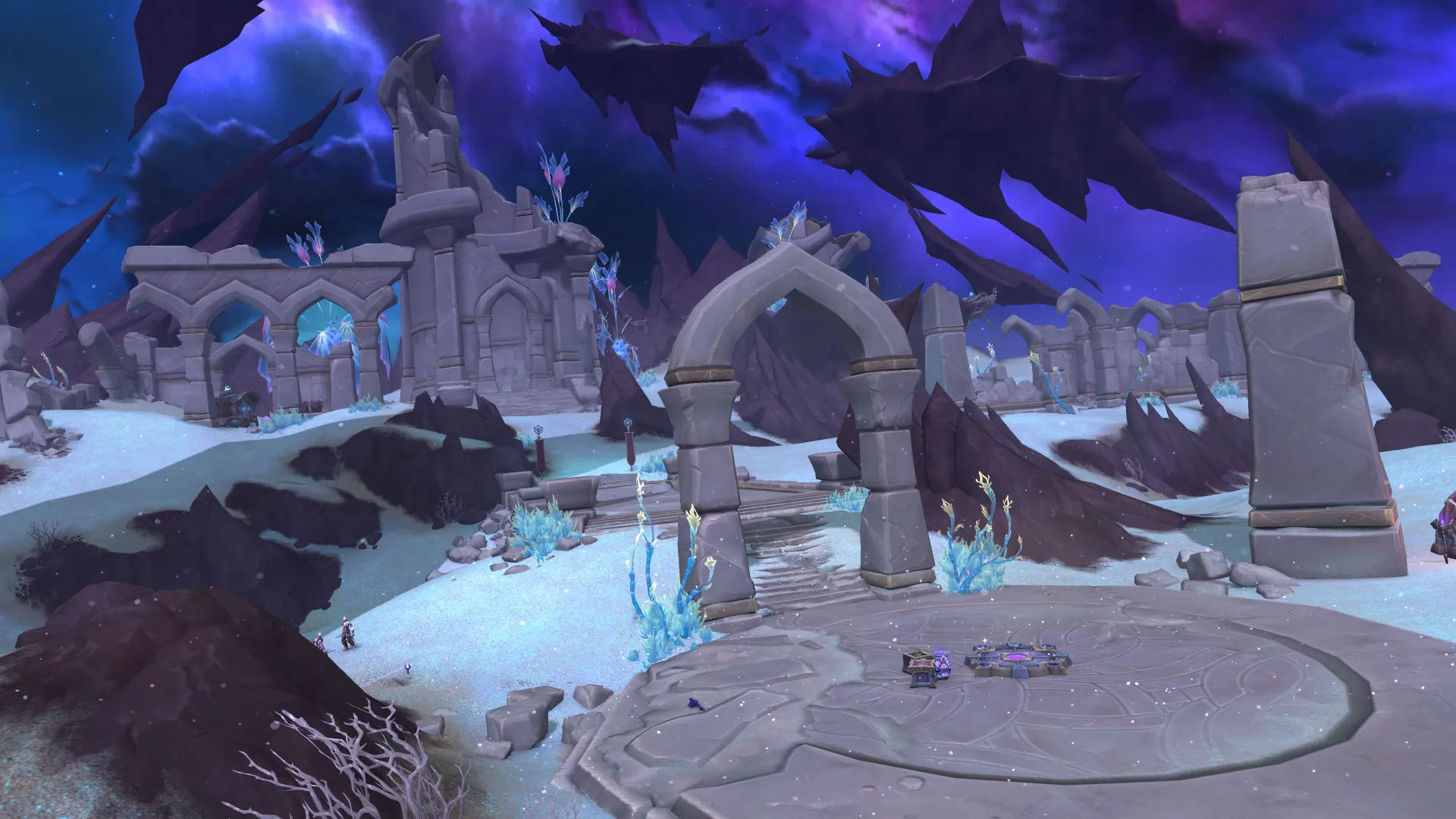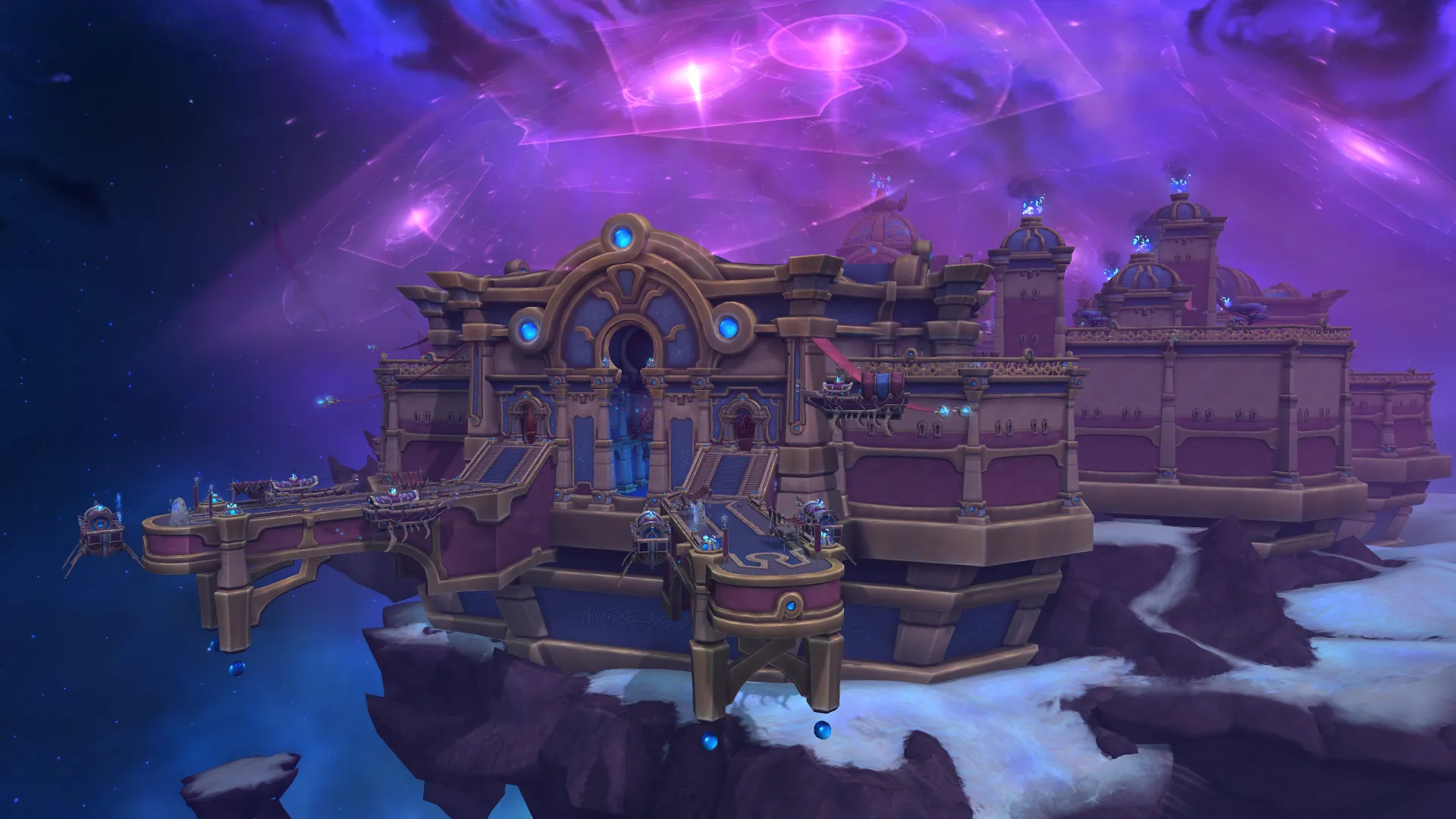WoW Ghosts of K’aresh – Dani Merrithew Interview (Blizzard Lead Quest Designer)
We catch-up with Dani Merrithew (Lead Quest Designer) to talk about the latest expansion from Blizzard, WoW Ghosts of K’aresh!
Welcome to Impulse Gamer Dani!
Worldbuilding and Narrative
Q) Ghosts of K’aresh introduces players to the shattered homeworld of the Ethereals. Could you elaborate on the creative process behind designing a zone that reflects such a cataclysmic history, and how you ensured the narrative weaves seamlessly into the larger ‘Worldsoul Saga’ while also providing a compelling, self-contained story about Dimensius’s return?
A) Before my answer, I want to emphasize that these answers are a collective of the quest and narrative designers closest to this content and their inspirations, desires, and ambitions for this update.
The K’aresh you see today is a haunting glimpse of Azeroth’s possible future if Dimensius and the Void get their way. Once home to a stable, thriving Worldsoul, K’aresh was ravaged by Dimensius. Though not fully consumed, the cost was catastrophic: a shattered world, a dust-choked atmosphere, and the souls of the ethereals now bound to arcane wrappings.
This desolation now stands as a warning within the Worldsoul Saga, especially with Xal’atath and her desire for the Dark Heart. K’aresh forces us to ask: What happens when a world loses its war with the Void and what desperate bargains must survivors make to endure?
Unlike the zany and bustling chaos of Undermine, K’aresh is deliberately empty. Its starkness tells a story through absence. Every corner speaks of loss and regret, but for its survivors, there are still flickers of hope. It’s a story of sacrifice: the ethereals gave up their present to preserve a future. Now we face a similar choice: do we align with Xal’atath to save today, knowing we risk tomorrow?
In the 10.2.7 update, our journey began with Locus-Walker and Alleria. His warning, shaped by the fall of K’aresh, set the stage for the trilogy. That structure gives us room to slow down, dive deeper into world building, and connect with these characters and their culture in meaningful ways.
For K’aresh that gave us the opportunity to further explore a culture we established back in the Burning Crusade: the ethereals, and the brokers who we met in Shadowlands. We wanted to represent a side of them not just as traders, but as a culture shaped by survival, trust, and cooperation in a harsh desolate world. Central to their identity are the Oracles’ oaths of solemn promises that ask: Can you be trusted? Will you keep your word?
This update gave us space to step back from the Earthen–Titan narrative and spotlight K’aresh’s unique voice. Even though we’ve left Azeroth we’ve wanted to ensure players continue to be rooted in the Worldsoul Saga’s core question: … What is coming for Azeroth’s Worldsoul, and what are we willing to sacrifice to protect it?
Quest Design and Player Experience
Q) The new ‘Phase Diving’ mechanic, tied to the Reshii Wraps, sounds like a significant evolution in outdoor content. From a quest design perspective, how did this mechanic influence the types of objectives, puzzles, and environmental storytelling you were able to implement? Are there specific examples where Phase Diving truly transforms the player’s interaction with K’aresh?
A) When players unlock Phase Diving, they gain access to the Untethered Space, a warped realm that exists between K’aresh and the Arcane. To us mortals, it’s a space of horror and danger. But to the ethereals, it’s a rare place of reprieve, albeit, one unraveling with time.
Here, lost spirits drift, remnants of ethereals who couldn’t be saved and slowly descended into madness. The realm has also been invaded by horrors from across realities, making every step a risk. Be warned: in the Untethered Space, you’re never truly safe. Dangers can phase in from anywhere, at any time.Phase Diving was designed to discover the fantasy of what it means to be impermanent, like the ethereals phasing between worlds, never truly anchored. This idea comes to life through the enemies you face, such as:
- Reshanor, a massive void dragon that tears through both realities, feeding on K’aresh.
- Sthaarbs, a cosmic observer that threatens the Oasis, which is K’aresh’s last hope of restoration. You can only defeat it by shifting into a phase where the necessary terrain no longer exists in normal space.
Exploration is at the heart of this feature. Players can seek out phase-lost weapons, each with a unique backstory about how it slipped between realities. There are also hidden treasures, puzzles, and quests that only appear while phase diving. There is also a series of quests called Warrants, that take place both in K’aresh and The Unthered Space.
Additionally, there is a world quest where you take on the form of an ethereal, using their abilities to survive and adapt.
As you upgrade your Reshii Wraps, new layers of content open, including secrets in all Khaz Algar Delves. You’ll also unlock Phase Conduits, which make navigating K’aresh quicker.
And this is just the beginning: Phase Diving and the Reshii Wraps connect to other surprises throughout Patch 11.2. The more you explore, the more you’ll discover!
Character Development and Lore
Q) With characters like Alleria Windrunner and Locus-Walker playing central roles in the Ghosts of K’aresh narrative, how did you approach expanding their personal stories and their relationship with the Ethereals? Were there any particular challenges or opportunities in delving deeper into the lore of a race that has been present in World of Warcraft for so long but whose origins haven’t been fully explored until now?
A) For Alleria, the Shadowguard have been a persistent enemy since Argus in 7.3. Their recent invasion of Telogrus in 10.2.7 was under Xal’atath’s command, so it didn’t surprise her to face them on their home turf. What she didn’t expect was the deeper truth: these Shadowguard serve Dimensius, and now, to reach her goals, Alleria may have to work alongside the very force she once swore to fight.
Locus-Walker remains as enigmatic as ever. Part of his appeal is what isn’t said, his mystery is central to his character. In writing him, we treated each reveal as a reluctant loss on his part not something he wanted to share, but was forced to, due to the players’ actions, the brokers’ questions, or the emergence of old enemies. Allies might call him a “Ravel Sorcerer.” A broker might give him a side-eye. A rival might try to kill him. Each moment forces a crack in his composed facade, pulling at the threads of a past he’d rather keep buried.
We’ve established ethereals have arcane cores. The shadowguard, in contrast, wield void cores, sworn to the Void. But there’s a third path, rare ethereals who carry void cores but reject the Void’s control. Locus-Walker is one of them, and his path is controversial even among his own kind.
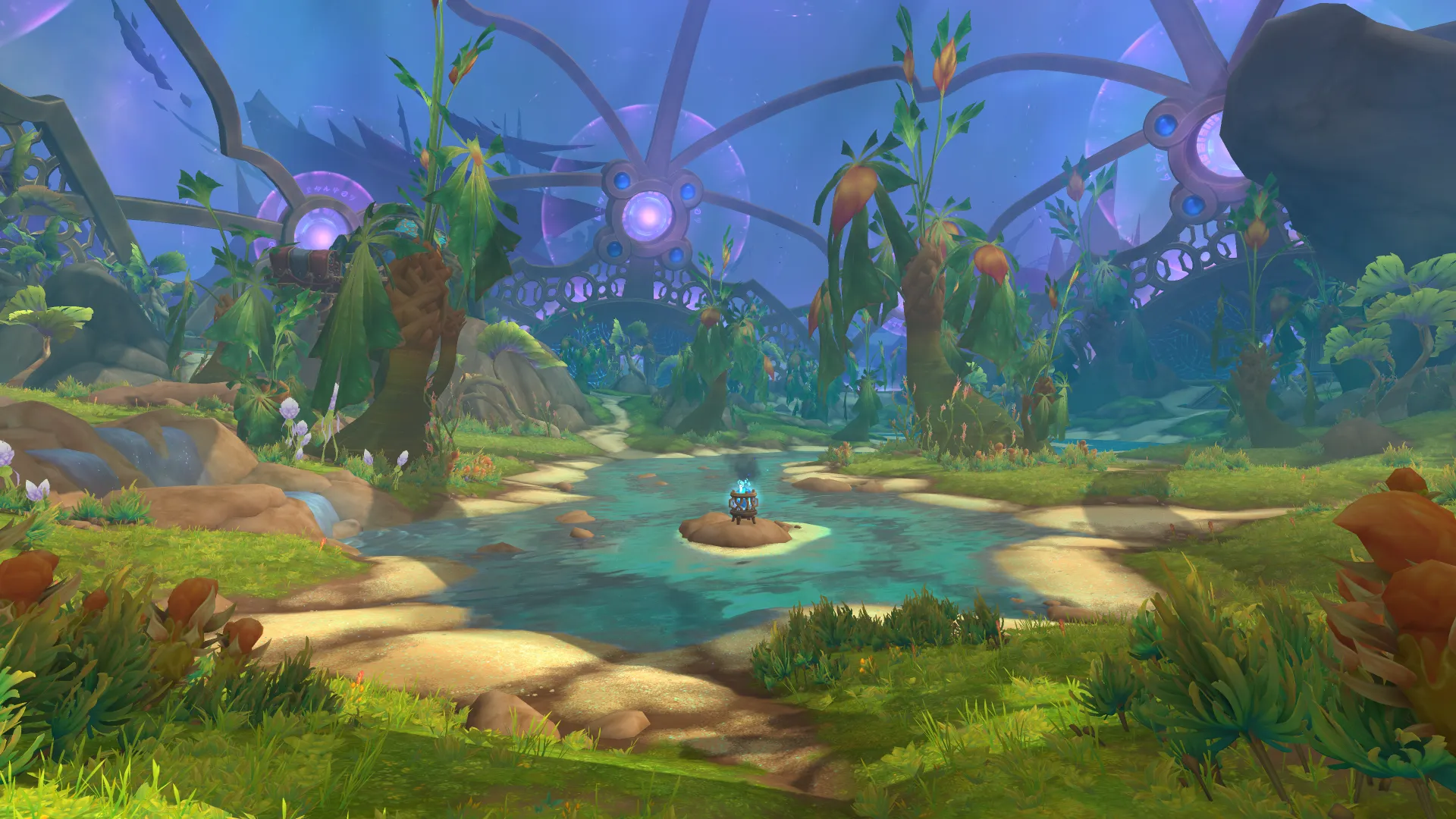
While we touch on these factions in the campaign, there’s far more we wanted to explore, from the Trust, to deeper broker connections, to Ve’nari’s history. But like the ethereals themselves, some mysteries are best left to unfold over time. Our biggest challenge wasn’t what to include, it was holding back. We wanted to preserve the essence of mystery while giving players a clearer understanding of who these beings are. That includes reinforcing a key truth: brokers are ethereals. Not a different species, but a different role, shaped by culture, experience, and necessity.
The story of K’aresh also gave us the opportunity to revisit how we represent these cultures. We worked with a consultant versed in pre-Islamic Arabian cultures to respectfully reflect those influences in the design of ethereal life, from their market-based society to the oaths that shape their identity. Just as we revisited goblins in Undermine, we wanted to show the “human” side of the ethereals: What’s their day-to-day? What’s left of their culture? Why were brokers traveling through the Shadowlands? What threads from the Twisting Nether remain tied to K’aresh?
To help players prepare for this new chapter, we also recently released a Lorewalking story recap covering the ethereals’ journey leading up to 11.2.
K’aresh is not the end of their story, it’s just the beginning.


